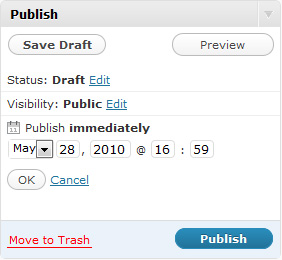Writing marketing copy or sales copy that really works can be a challenge, especially for people with little or no experience. One of the best ways to learn how to write great copy, is to read great copy and then study what you have read. Why did that particular message compel you to click a link? What was it about the specific offer you just read, that made you follow-up on it?
Copy writing and Dead Trees
One of the best pieces of copy writing I have seen over the past few years, is just a simple, short phrase. It’s often used when online publications refer to paper-based; newspapers, magazines and trade publications etc. The term is dead tree media. For example, when referring to a headline on the front page of the traditional paper version of The Times, a blogger will often refer to it as the front page of the dead tree edition of The Times.
The reason this is such a clever phrase, is that those 2 words, dead tree, are extremely emotive:
- The phrase dead tree immediately focuses our mind on the fact that in order for paper to be made, trees not only need to be cut down; they have to be killed! Even recycled paper was once a tree.
- By calling the traditional version of a newspaper, magazine or whatever the dead tree edition, we start to think of it as out-dated. When we see the term applied regularly enough, it can be a very powerful way to reinforce the belief that paper-based media is either dying or dead.
- When there are 2 options available to the reader; either a dead tree edition of a magazine or an online version, the online version is automatically made to sound more attractive, simply because it isn’t being referred to negatively.
A quick copy writing tip
If you are serious about the success of your marketing, you need to get serious about copy writing too. Here’s a tip. Collect all the; emails, marketing letters, articles or blog posts that motivate you to take action and study them. Study what it was that compelled you to click their link, visit their store, call them or email them.
For example, look at the box below this post, with a call to action. Every hour of every day, people click the link in that box to find out how they can work with me. Look at the message and think about how you can apply something similar to YOUR site; something that will provide you with sales leads all day every day.
The bottom line: Your site should (and could) be a relentless, lead-generating machine for your business. If it isn’t, you could well be missing out on more sales and higher profits than you currently believe is even possible.
Let’s work together and grow your business. To find out more click here!

 You know the blogs I mean, right? The blogs where you find yourself just skimming the content because after a glance of the page layout, you just don’t feel like reading the whole thing? If you want to attract more blog readers and increase reader engagement on your blog, you need to make reading your posts a comfortable experience. Otherwise, people will just skim your content and miss what you have to say.
You know the blogs I mean, right? The blogs where you find yourself just skimming the content because after a glance of the page layout, you just don’t feel like reading the whole thing? If you want to attract more blog readers and increase reader engagement on your blog, you need to make reading your posts a comfortable experience. Otherwise, people will just skim your content and miss what you have to say.

 Many small business owners make the mistake of relying too heavily on just 1 or 2 sources of leads. The problem with that approach, is that if one of those lead sources slows down or stops delivering, you are in BIG trouble! It’s far better to develop a wide spread of inbound, sales lead opportunities.
Many small business owners make the mistake of relying too heavily on just 1 or 2 sources of leads. The problem with that approach, is that if one of those lead sources slows down or stops delivering, you are in BIG trouble! It’s far better to develop a wide spread of inbound, sales lead opportunities.